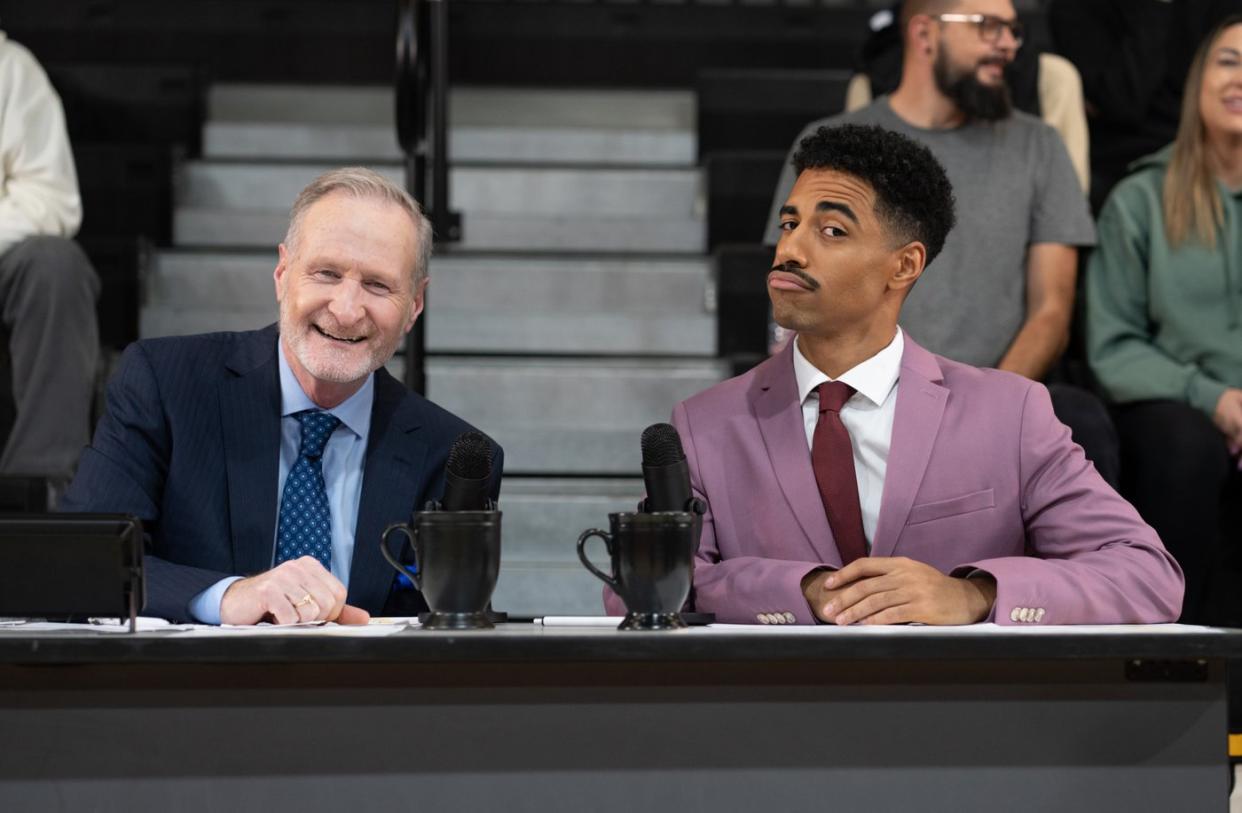Can a TikTok star find fame on TV? Boman Martinez-Reid is set to find out in new show

TikTok star Boman Martinez-Reid says when Bell Media first offered him his own show there was no concept in mind, but he did have a lot of questions.
“How do you take someone from the internet and put them on TV in a meaningful way that is exciting for my audience and can attract new viewers, without it being cringe?” says the 26-year-old Toronto native, whose parodies of reality TV shows blew up on TikTok during the pandemic.
"We've seen it time and time again with many social media stars: they get a TV show, and then it kind of goes nowhere."
Eventually, Martinez-Reid and showrunner Natalie Metcalfe decided to lean into their conundrum.
“Made For TV With Boman Martinez-Reid," streaming Friday on Crave and premiering on its linear TV channel next week, is a mockumentary style comedy that follows the social media star as he attempts to cross over into television. In each episode, he tests out a different TV genre in hopes of finding one that will catapult him to fame beyond the digital realm.
It’s among several shows that are part of Bell Media's strategy to work with entertainers who amassed their audiences online. But some critics question the viability of the approach and what it will mean for Canada’s ability to build homegrown TV stars.
Carlyn Klebuc, Bell Media's general manager of original programming, says the company's digital development team has been actively searching for talent in online spaces. The company first hit social media pay dirt with "Letterkenny," which was originally a YouTube series by Jared Keeso and Nathan Dales before getting picked up by Crave in 2015 and becoming a Canadian cultural phenomenon over the course of its 12 seasons.
Recent examples include Crave's “Late Bloomer,” which premiered earlier this year and stars online personality Jus Reign, and the forthcoming “Office Movers,” created by YouTube comedians Jae and Trey Richards.
“It's a great way of taking talent we see is already resonating with non-traditional audiences and trying to bring them onto our channels, brands and platforms,” Klebuc said last month while promoting Bell's upcoming programming lineup.
Media analyst James Nadler says one likely reason Bell is investing in series with social media stars is that they cost less to develop, though he’s skeptical the talent's online success will translate to TV.
“Bell doesn’t have to pay for a pilot for these shows. These social media stars have already developed their personas and told their stories," says Nadler, an associate professor of media production at Toronto Metropolitan University. "All of them have cut through the clutter to build an audience, and they've done it less expensively for Bell."
But Nadler says crossover success is rare because traditional broadcast and streaming audiences have different tastes than social media audiences.
“The challenge a lot of (online personalities) have is if you're just speaking to camera and playing yourself, maybe you get some humour from that, but where's the conflict? Where's the story structure?” he says.
“It's one thing to sustain a two-minute piece or even a 10-minute piece, but to sustain 22 minutes requires more writing.”
There are signs of the formula working, however. Klebuc said “Late Bloomer,” which was renewed for a second season, was one of this year’s biggest successes, cracking Crave's top 10 for first-week streams.
Metcalfe, the “Made For TV With Boman Martinez-Reid" creator who herself began as a YouTube comic, says Bell is working with online creators because it wants to tap into a younger, more diverse and cord-cutting demographic.
She says "Made For TV" is partly a commentary on the negative perception around digital stars transitioning to television.
"During the pandemic, we all turned to content creators for our comedy, for our laughs, for our cries just to keep us from being in our own brains. And then to turn around and say, 'You don't deserve a TV show' is wild to me."
Martinez-Reid says “there's very little respect" for social media creators.
“There’s a stigma about people on social media where they are generally looked at as untalented, or they're seen as privileged and that they just do nothing,” he says. “It’s so interesting that for me to be validated, I have to wait for some guy in an office to give me my big shot. But here I am producing a digital series myself.”
Still, some in the industry worry that as more broadcasters seek talent with built-in audiences, they will be less inclined to invest in shows with unknown leads.
After her Canadian Screen Award-winning Crave comedy “Bria Mack Gets A Life” was cancelled after one season, creator Sasha Leigh Henry questioned Bell’s commitment to cultivating new talent, arguing it invested fewer marketing dollars in her show because it starred a relative newcomer. Toronto's Malaika Hennie-Hamadi played a young Black woman navigating adulthood in a predominantly white world, aided by an invisible hype girl.
“What concerns me with the Canadian media landscape is this idea of wanting talent to essentially already have an audience that it is bringing to you for a show,” Henry said in an interview last month.
Bell had said that it cancelled Henry's show because it ultimately "could not find an audience on Crave."
However, Martinez-Reid, who identifies as biracial and gay, argues that as broadcasters and streamers increasingly recruit talent from social media, Canadian TV screens are becoming more diverse.
“Broadcasters used to build up stars that all looked the same. They gave platforms to people that don't look like me, that don't have my lived experience or my sexual orientation,” he says.
“Looking for fresh voices is important, and I think the only way broadcasters are going to find that is through social media.”
This report by The Canadian Press was first published July 10, 2024.
Alex Nino Gheciu, The Canadian Press


